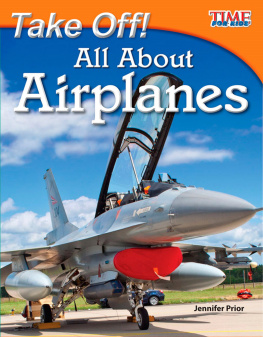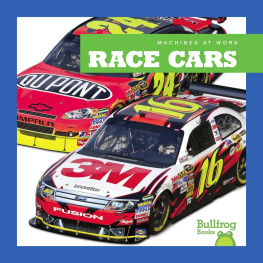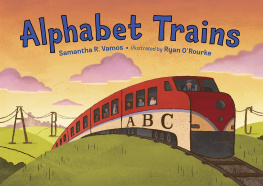
Jennifer Prior


Consultants
Timothy Rasinski, Ph.D.
Kent State University
J.P. Naybor
Train Conductor
Morris E. Nelson
Railway Switchman
Publishing Credits
Dona Herweck Rice, EditorinChief
Robin Erickson, Production Director
Lee Aucoin, Creative Director
Conni Medina, M.A.Ed., Editorial Director
Jamey Acosta, Editor
Heidi Kellenberger, Editor
Lexa Hoang, Designer
Stephanie Reid, Photo Editor
Rachelle Cracchiolo, M.S.Ed., Publisher
Image Credits
Cover hfng/Shutterstock; p.3 Maikloff/Shutterstock; p.4 jpbcpajpbcpa/iStockphoto; p.5
Kenneth Sponsler/iStockphoto; p.6 World History Archive/Newscom; p.8 LOC-LC-USZC4-9044;
p.9 akg-images/Newscom; p.9 LOC-LC-D41-140; p.10 Rick Neese; p.11 left to right: Joe
Belanger/Shutterstock; ollo/iStockphoto; p.12 The Print Collector/Alamy; p.13 FloridaStock/
Shutterstock; p.14 Chris Curtis/Shutterstock; p.15 Oleksiy Mark/Shutterstock; p.16 Tim
Pleasant/Dreamstime; p.17 top to bottom: akg-images/Newscom; AFP/Getty Images; p.18
left to right: Robert J. Beyers II/Shutterstock; Darryl Brooks/Shutterstock; p.19 Ulrich Mueller/
Shutterstock; p.20 left to right: s_oleg/Shutterstock; Kenneth Sponsler/Shutterstock; p.21 top
to bottom: BartlomiejMagierowski/Shutterstock; Condor 36/Shutterstock; p.22 top to bottom:
DDCoral/Shutterstock; R Carner/Shutterstock; marekuliasz/Shutterstock; p.23 MARGRIT
HIRSCH/Shutterstock; p.24 left to right: Yulia/BigStock; Fox Photos/Getty Images; p.25 top to
bottom: Judy Tan; m11/ZUMA Press; p.26 AFP/Getty Images; p.28 Maikloff/Shutterstock;
back cover: Maikloff/Shutterstock
Based on writing from TIME For Kids.
TIME For Kids and the TIME For Kids logo
are registered trademarks of TIME Inc.
Used under license.
Teacher Created Materials
5301 Oceanus Drive
Huntington Beach, CA 92649-1030
http://www.tcmpub.com
ISBN 9781433336560
2012 Teacher Created Materials, Inc.
Synched Read-Along Version by:
Triangle Interactive LLC
PO Box 573
Prior Lake, MN 55372
ISBN-13: 978-1-68444-830-2 (e-book)

Table of Contents
Train Song ...............................
A Brief History of Trains ..................
How Trains Work ........................
Working on the Train .....................
Train Cars ..............................
Train Transportation .....................
All Aboard! .............................
Glossary ................................ 27
Index .................................. 28

Train Song
A lonesome song floats
through the air. Woo, woo,
it sounds in the distance.
Then nearer and nearer
it draws. Clicketyclack,
clicketyclack, the train
calls as it moves closer
along the track.

Ding, ding, ding, ding, ding, sounds the bell at
Trains are used to transport many dierent things.
the crossing. Car after car chugs by. Clicketyclack,
clicketyclack. What is it carrying? Where is it
going? Clicketyclack, clicketyclack. What makes
it move? How many miles will it travel? Ding, ding,
ding. The crossing bell falls silent. The train moves
into the quiet night. A lonesome song floats in the
distance, Woo, woo woo, woo woo, woo.

The Wabash Cannonball
In the late 1800s and early 1900s, railroad travel was
the fastest way to go. People found it exciting to
travel long distances by train. Some popular songs
of the time show how they felt. Here is part of The
Wabash Cannonball, one of the most popular songs
of the time.
Listen to the jingle, the rumble, and the roar,
As she glides along the woodlands, over
hills and by the shore.
Hear the mighty rush of the engine, hear the
lonesome whistles call.
Traveling through the jungles on the Wabash
Cannonball.

A Brief History of Trains
Trains were first used in the early 1800s. They were
not like trains today. The cars were like wagons. They
were pulled along tracks by horses.
In 1830, the first steampowered train was run. After
this, many railways were made. Most were shortrun
tracks. That means the tracks were not very long. They
carried people and freight .
Later, long railways were made. Trains could travel
across the country. They even had beds on them. This
made the long trips easier for passengers.
advertisement for the rst
steam-powered train

Hop on the Train
Laying Track
In 1840, there were 2,818 miles of
track in the United States. By 1860,
there were 30,000 miles of track. In
1869, the rst track reaching across
the United States was completed.
It was called the Transcontinental
Railroad.
The top year for train travel
was 1920. But after that, the
number of people traveling
by train began to drop o as
the numbers of automobiles
increased. Today, train travel
is growing in popularity again,
perhaps to avoid automobile
trac and pollution.

How Trains Work
The Rails
Trains run along tracks made of steel and
wood. The rails are steel. Wooden ties hold them
together. Long strips of steel are joined by steel





























